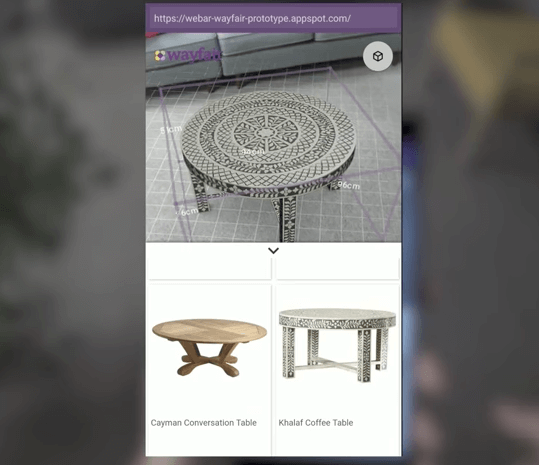Web browsing coming to VR headsets, AR coming to the web via Chrome
This is all part of Google's larger mission to make the web more compelling and immersive.

Google is bringing the Chrome browser to virtual reality (VR) and also bringing augmented reality (AR) into the Chrome browser. On the second day of I/O, at the end of its morning keynote, Google made two announcements tied to Chrome that are quite interesting for the future of the mobile web.
Google previously authored a web VR spec that allows developers to create VR (360-degree) experiences for the browser. Yesterday, Google said that it was bringing the full Chrome browser to VR headsets. For conventional web pages, you’ll see the same 2D experience, but web VR experiences will be fully immersive in the headset. Web video will also be transformed into a large-screen experience.

User bookmarks and history will be accessible in the VR headset Chrome experience as well. This will be live “later this year” on Chrome for Android.
Perhaps more significantly, Google said that it was making AR available through the Chrome browser. Mobile apps permit users to have AR experiences today (think Pokémon Go); the news here is that these experiences can be brought into conventional web pages in the browser.
The example shown on stage involved an online furniture shopping scenario where AR was able to insert various virtual objects into a person’s home, as the screen shot below shows.

The promise to developers is that they could “easily integrate AR features” into existing websites. However, this is built into a experimental version of Chrome that is not yet generally available, though it’s available to developers on GitHub. Other third parties are also working on these capabilities for the browser.
Announced on Wednesday, Google Lens is a kind of AR experience. But this is just one significant example, and given the recent emphasis Google, Microsoft and Facebook (and soon, Apple) are putting on AR, we’re likely to see an explosion of AR experiences in the coming 18 months.
Opinions expressed in this article are those of the guest author and not necessarily MarTech. Staff authors are listed here.
Related stories
